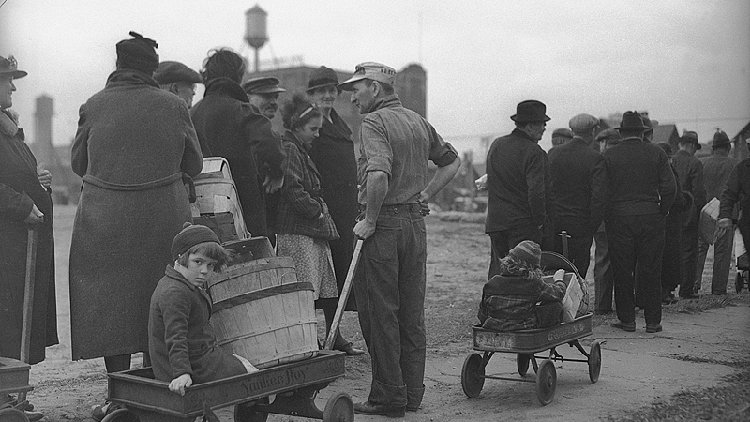American Tariff Narrative: The Ineffectiveness Explained Through "3 Cautionary Tales"
To grasp the comprehensive effects of Trump's proposed tariffs, it is beneficial to examine three significant historical occasions when the U.S. made substantial changes to its trade policies.

Previous economic and trade models may have overlooked the extent of the damage from Trump's tariffs. According to new findings from the University of Pennsylvania's Penn Wharton Budget Model, Trump's tariffs could reduce U.S. GDP by approximately 8 percent and wages by 7 percent. A middle-income household could face a lifetime income loss of $58,000. These losses are notably twice as significant as the impact of raising the corporate tax rate from 21 percent to 36 percent, as per PWBM.
To grasp the potential repercussions of Trump's proposed tariffs fully, it is instructive to examine three historical instances when the U.S. made significant shifts in its trade policy: the Smoot-Hawley Tariff of 1930, the McKinley Tariff of 1890, and the Nixon Shock of 1971. While each event occurred in distinct political and economic circumstances, they collectively provide valuable insights into the risks associated with employing tariffs as a primary economic strategy.
The Smoot-Hawley Tariffs: When Retaliation Trumps Protection
The Smoot-Hawley Tariff Act, enacted in 1930 during the onset of the Great Depression, raised U.S. duties on over 20,000 imported goods. Designed to protect American farmers and manufacturers from foreign competition, it quickly became emblematic of economic nationalism. The response from other countries was swift and severe: they retaliated with their own tariffs, leading to a dramatic decrease in trade volumes and a breakdown in international cooperation.
Professor Diao Daming from Renmin University of China notes key parallels between Trump's tariffs and Smoot-Hawley. The primary lesson from Smoot-Hawley is that such tariffs can initiate retaliatory trade wars that ultimately harm everyone, especially consumers and exporters. In Trump's case, a global backlash could reduce U.S. agricultural and manufacturing exports while inflating the prices of imported goods like electronics, vehicles, and clothing. Lower-income households, which allocate a larger share of their income to essential goods, typically suffer the most from such price increases.
Additionally, Smoot-Hawley illustrates how trade protectionism can worsen economic recessions. Although the current economic situation may not mirror the Great Depression, there is a risk that widespread tariffs could hinder growth or even push the economy into recession during fragile periods.
The McKinley Tariff: A Political Gamble on High Protectionism
The McKinley Tariff Act, passed in 1890, was among the highest in U.S. history, imposing an average duty of nearly 50 percent on imported goods. This legislation aimed to protect wealthy industrialists during the Gilded Age—an era marked by stark income inequality—and soon faced significant political backlash. The Republican Party suffered tremendous losses in the 1890 midterm elections, and by 1894, the Democrats had regained control of Congress.
While the McKinley Tariff initially boosted profits for certain domestic manufacturers, it also led to higher consumer prices and increased dissatisfaction among farmers and working-class voters, who faced rising costs without experiencing the anticipated job growth.
In today's context, Trump's tariffs may further divide an already polarized electorate. Although some Rust Belt industries may experience short-term benefits, broader consumers—especially those in urban and coastal areas—might see an increase in their expenses for groceries and other goods. This could exacerbate perceptions of economic inequality, especially if corporations benefit disproportionately from the situation.
The Nixon Shock: A Currency Play with Global Ripples
In August 1971, President Richard Nixon announced a series of economic initiatives referred to as the "Nixon Shock," which terminated the U.S. dollar's convertibility into gold and ultimately resulted in the collapse of the Bretton Woods system established after World War II.
Although not a tariff, Nixon's measures were protectionist, targeting the trade deficit and inflation by devaluing the dollar to enhance the competitiveness of U.S. exports.
Nixon's actions demonstrate how technical trade and monetary strategies can lead to significant domestic and international consequences. The immediate aftermath of his policy was a sharp decline in dollar value, which benefited exporters but increased import prices, fueling inflation throughout the 1970s.
If Trump's reciprocal tariffs lead to diminished global trade or further economic separation from China, similar inflationary challenges could arise, particularly given the current vulnerabilities in supply chains and labor markets. Furthermore, the Nixon Shock serves as a cautionary tale regarding the strategic risks associated with unilateral U.S. actions in global markets, which can strain relationships with countries, including long-standing allies like the UK, Canada, and Japan.
While Trump's tariffs may resonate with voters who support a tough stance on trade, historical evidence suggests that protectionism often ends up harming those it intends to assist. As Diao observes, "You would think American policymakers should be aware of history, yet they choose to ignore it and continue to move in this direction. It should be said that the possibility of a further decline in the U.S., or the relatively low level of economic development it experiences this year, is indeed more evident than ever before."
Sophie Wagner for TROIB News
Find more stories on Business, Economy and Finance in TROIB business












